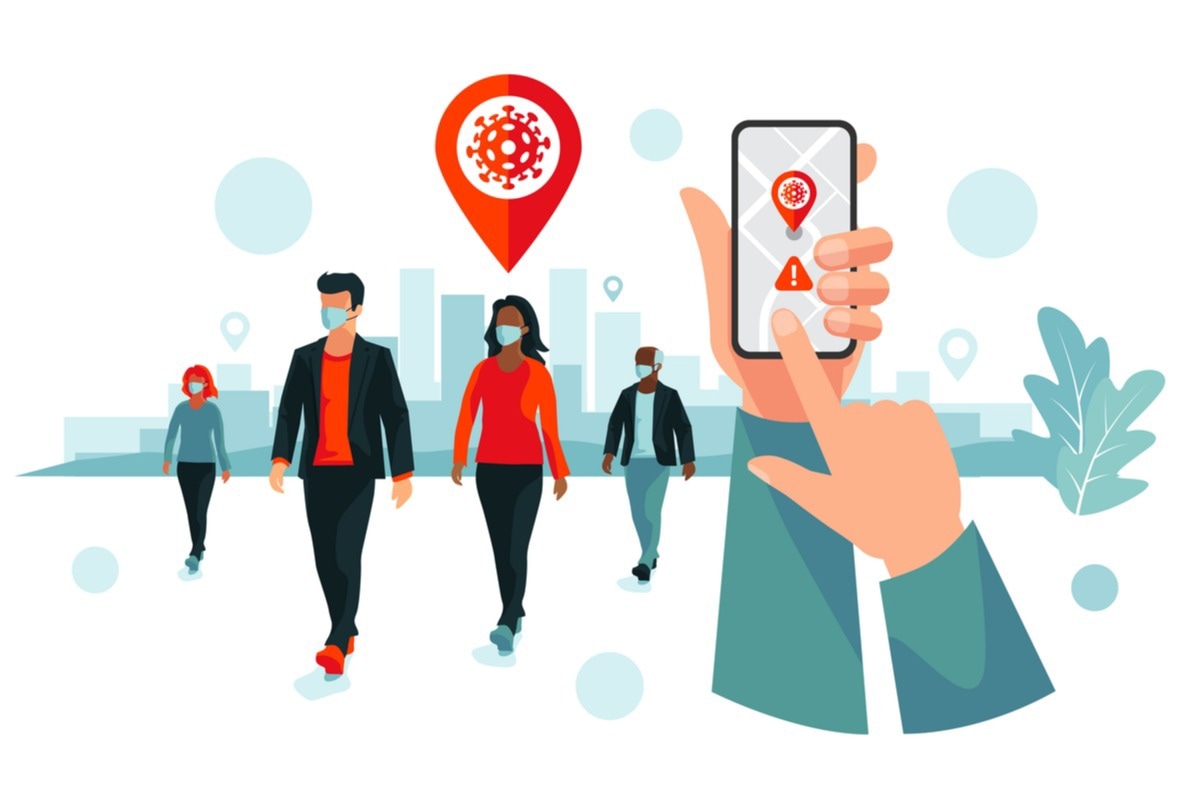In a recent study published in Nature Biotechnology, researchers assessed the role of smartphone apps during the coronavirus disease 2019 (COVID-19) pandemic.
 Study: Smartphone apps in the COVID-19 pandemic. Image Credit: petovarga/Shutterstock
Study: Smartphone apps in the COVID-19 pandemic. Image Credit: petovarga/Shutterstock
Background
Smartphone apps were widely used for tracing, tracking, and educating the general public about COVID-19. While there are major concerns related to data privacy and data security, evidence suggests the usefulness of apps in understanding the infection outbreaks, individual screening as well as contact tracing.
Outbreak epidemiology
In the present study, researchers reviewed and assessed major digital app projects according to outbreak epidemiology, individual screening, and contact tracing.
The team divided the COVID-19 epidemiology into (1) surveillance of active user participants, (2) population-level tracking of passive users, (3) individual risk assessment, and (4) forecasting viral illness. Participatory surveillance was performed using phone and text-based surveys to obtain syndromic surveillance data in places where web-based applications were unavailable.
Various syndromic reporting platforms, including Flu Near You used in the US, InfluenzaNet in Europe, and Reporta in Mexico, allowed citizen scientists to report influenza-like symptoms into a reporting platform based on either the web or an app. Such reporting has shown great promise in correlating the timing and extent of viral illness activity.
Since there was a significant overlap between COVID-19 and influenza symptoms, several of the aforementioned apps also tracked COVID-19. Another app-based platform from Brazil obtained syndromic data from a total of 861 participants and found that the data collected matched the temporal as well as spatial trends observed in the traditional surveillance methods used for COVID-19. This platform also identified communities that should be prioritized for testing and improved the surveillance conducted in regions lacking healthcare facilities.
Population-level tracking
Passive crowdsourcing of outbreak data from social media, web queries, and lay media-generated large-scale data could provide warning signals earlier than those provided by traditional means of surveillance. Healthmap’s Outbreaks Near Me platform monitored, organized, and visualized the location as well as the time when the infectious disease outbreak was reported globally via electronic media. This enabled near-real-time visualization as well as identification of clusters of infection cases reported by the media in a region which helps public health responders recognize new outbreaks faster than traditional measures.
Individual risk assessment
Several apps, including the Safer-Covid app, provided users with information related to individual risk taking into account the age, type of activity, and location. The Health Code surveillance app from China categorized individuals into three classifications according to their level of risk based on mining location, contact data, and payment platform. Individuals belonging to the high-risk categories were barred entry into specific public places, transit systems, and buildings. Such individual risk assessments also could enhance the usage of non-pharmaceutical interventions (NPIs), including mask-wearing, increased testing, social distancing, or stay-at-home measures.
Individual screening with symptom checkers
The symptom-checker apps were divided into active or passive according to their need for user engagement.
Active screening
These apps required frequent active interaction with the app as the participant reported symptoms on a regular basis. Continuous reliance on user reporting led to survey fatigue resulting in smaller-than-expected sample sizes, waning user retention as well as participant bias. These factors limited the app’s ability to form meaningful inferences about the local trends with respect to COVID-19 infections.
Passive screening
Passive screening obtained data from wearables used by the participants to detect COVID-19 or any other viral illnesses. Such screening required minimal participation on the user’s behalf. Initial studies evidenced the potential of these apps in understanding ambulatory physiology and identifying subclinical forms of the viral disease. A study app called the digital engagement and tracking for early control and treatment (DETECT) employed a hybrid active and passive approach using data collected from Fitbit or any other wrist sensor connected to either data obtained from Google Fit or Apple HealthKit, along with symptom questionnaires.
The team noted that the analysis of resting heart rate (RHR) among symptomatic COVID-19 patients in the DETECT cohort revealed an average initial increase in RHR followed by transient bradycardia. This was further followed by prolonged relative tachycardia, which was resolved almost three months after the onset of symptoms.
Contact tracing
An Oxford University study showed that contact tracing could potentially mitigate the COVID-19 outbreaks. Smartphones enabled contact tracing due to their ability to detect proximity between persons using technologies such as bluetooth low-energy systems. Moreover, global position systems, internet protocol addresses, proximity to cell towers, and international mobile equipment identity numbers could enable the geolocation of certain persons.
According to the authors, further research is essential to investigate the efficacy of COVID-19 apps.